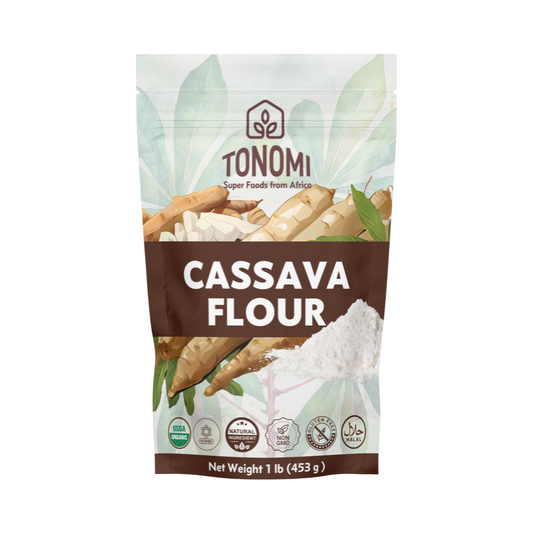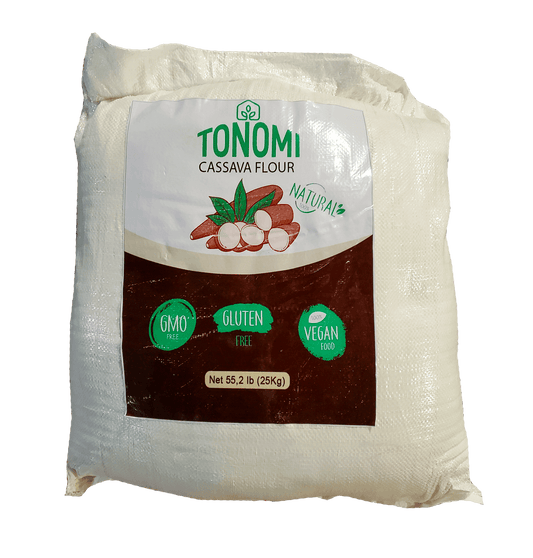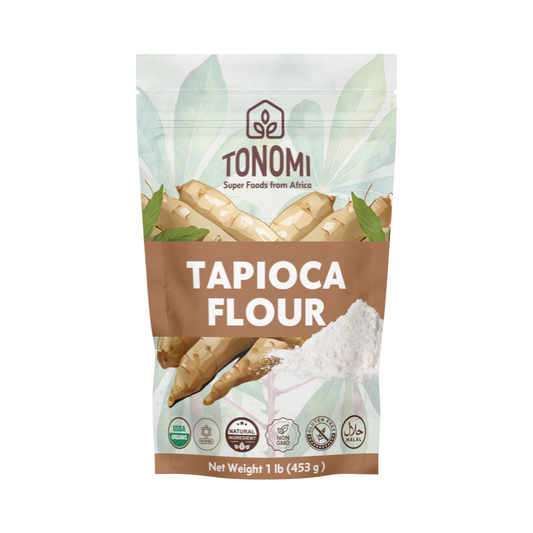Traveling can be an exhilarating experience, offering opportunities to explore new cultures, cuisines, and landscapes. However, for those with dietary restrictions, such as a need to follow a gluten-free diet, traveling can also pose significant challenges. Managing your dietary needs while on the go requires careful planning and a bit of creativity. This blog post will provide you with essential tips for a hassle-free gluten-free journey, covering everything from preparing for your trip to finding safe meals at your destination. We’ll also delve into gluten-free bread flour ingredients, gluten-free flour recipes, making gluten-free bread with tapioca flour, and alternatives to wheat.
Preparing for Your Gluten-Free Journey
Research Your Destination
Before you embark on your journey, research your destination thoroughly. Understanding the local cuisine and common ingredients can help you identify potential challenges and opportunities for gluten-free dining. Look for restaurants that offer gluten-free options and check if there are any local gluten-free bakeries or stores.
Pack Your Essentials
Bringing along some gluten-free essentials can make your trip much smoother. Consider packing the following:
- Gluten-free snacks: Nuts, dried fruits, gluten-free granola bars, and rice cakes.
- Gluten-free bread: If you can’t find gluten-free bread at your destination, pack a loaf or two in your luggage.
- Gluten-free flour: If you plan to cook or bake while traveling, bring a small bag of your favorite gluten-free flour blend.
- Travel utensils: A small set of travel utensils can come in handy if you need to prepare or eat meals on the go.
- Portable toaster bags: These can help prevent cross-contamination if you need to use a shared toaster.
Learn Key Phrases
If you’re traveling to a non-English speaking country, learn some key phrases in the local language. Phrases like “I have a gluten allergy” or “Is this gluten-free?” can be incredibly helpful when communicating with restaurant staff or vendors.
Buy The Gluten Free Flour Online: https://tonomisuperfoods.com/products/taste-of-togo-4-pack
Download Helpful Apps
Several apps can assist you in finding gluten-free restaurants and products while traveling. Apps like Find Me Gluten Free, Gluten-Free Passport, and HappyCow can provide reviews and recommendations from other gluten-free travelers.
Gluten-Free Bread Flour Ingredients
Making gluten-free bread can be a challenge, but understanding the right ingredients can make all the difference. Here are some common gluten-free bread flour ingredients:
- Rice Flour: A staple in gluten-free baking, rice flour has a mild flavor and smooth texture.
- Tapioca Flour: Derived from cassava root, tonomi organic tapioca flour provides chewiness and helps bind gluten-free dough.
- Potato Starch: Adds moisture and softness to gluten-free bread.
- Sorghum Flour: Offers a slightly sweet, nutty flavor and enhances the nutritional profile of gluten-free bread.
- Xanthan Gum or Guar Gum: These binders help mimic the elasticity of gluten, giving structure to gluten-free bread.
Gluten-Free Flour Recipes
Gluten-free flour recipes can help you enjoy your favorite baked goods without the worry of gluten. Here are a few versatile recipes:
Gluten-Free All-Purpose Flour Blend
Ingredients:
- 2 cups rice flour
- 1 cup potato starch
- 1 cup tapioca flour
- 1 teaspoon xanthan gum
Instructions:
- In a large bowl, whisk together the rice flour, potato starch, tapioca flour, and xanthan gum until well combined.
- Store the flour blend in an airtight container.
Gluten-Free Pancakes
Ingredients:
- 1 cup gluten-free all-purpose flour blend
- 1 tablespoon sugar
- 1 teaspoon baking powder
- 1/2 teaspoon baking soda
- 1/4 teaspoon salt
- 1 cup buttermilk
- 2 large eggs
- 1/4 cup melted butter
- 1 teaspoon vanilla extract
Instructions:
- In a large bowl, whisk together the gluten-free flour blend, sugar, baking powder, baking soda, and salt.
- In another bowl, mix the buttermilk, eggs, melted butter, and vanilla extract.
- Pour the wet ingredients into the dry ingredients and stir until just combined.
- Heat a non-stick skillet over medium heat and lightly grease with butter or oil.
- Pour 1/4 cup of batter onto the skillet for each pancake. Cook until bubbles form on the surface, then flip and cook until golden brown on the other side.
- Serve warm with your favorite toppings.
Gluten-Free Chocolate Chip Cookies
Ingredients:
- 1 cup gluten-free all-purpose flour blend
- 1/2 teaspoon baking soda
- 1/4 teaspoon salt
- 1/2 cup unsalted butter, softened
- 1/2 cup brown sugar
- 1/4 cup granulated sugar
- 1 large egg
- 1 teaspoon vanilla extract
- 1 cup gluten-free chocolate chips
Instructions:
- Preheat the oven to 350°F (175°C). Line a baking sheet with parchment paper.
- In a bowl, whisk together the gluten-free flour blend, baking soda, and salt.
- In another bowl, beat the butter, brown sugar, and granulated sugar until creamy. Add the egg and vanilla extract and mix well.
- Gradually add the dry ingredients to the wet ingredients, mixing until combined. Stir in the chocolate chips.
- Drop tablespoonfuls of dough onto the prepared baking sheet.
- Bake for 10-12 minutes or until the edges are golden brown.
- Let cool on the baking sheet for a few minutes before transferring to a wire rack to cool completely.
Gluten-Free Bread with Tapioca Flour
Tapioca flour is a fantastic ingredient for gluten-free bread, providing a chewy texture and helping to bind the dough. Here’s a simple recipe for gluten-free bread using tapioca flour:
Gluten-Free Tapioca Bread
Ingredients:
- 2 cups tapioca flour
- 1/2 cup rice flour
- 1/2 cup sorghum flour
- 1/4 cup potato starch
- 1 tablespoon sugar
- 1 teaspoon salt
- 1 tablespoon active dry yeast
- 1 1/2 cups warm water
- 2 large eggs
- 1/4 cup olive oil
Instructions:
- In a small bowl, combine the warm water and yeast. Let it sit for about 5 minutes until frothy.
- In a large bowl, whisk together the tapioca flour, rice flour, sorghum flour, potato starch, sugar, and salt.
- Add the yeast mixture, eggs, and olive oil to the dry ingredients. Mix until a smooth batter forms.
- Pour the batter into a greased loaf pan. Cover with a damp cloth and let it rise in a warm place for about 1 hour or until doubled in size.
- Preheat the oven to 375°F (190°C).
- Bake the bread for 30-35 minutes, or until the top is golden brown and a toothpick inserted into the center comes out clean.
- Let the bread cool in the pan for a few minutes, then transfer to a wire rack to cool completely.
Alternative to Wheat
For those following a gluten-free diet, finding alternatives to wheat is essential. Here are some common and versatile alternatives:
Rice Flour
Rice flour is a staple in gluten-free baking, offering a mild flavor and smooth texture. It’s suitable for various recipes, including bread, cakes, and pastries.
Almond Flour
Made from finely ground almonds, almond flour is rich in protein and healthy fats. It provides a moist texture and nutty flavor, making it ideal for cakes, cookies, and muffins.
Buckwheat Flour
Despite its name, buckwheat is gluten-free. Buckwheat flour has an earthy flavor and works well in pancakes, waffles, and rustic bread.
Coconut Flour
Coconut flour is highly absorbent and requires additional liquid in recipes. It adds a subtle coconut flavor and is perfect for cakes, cookies, and bread.
Sorghum Flour
Sorghum flour has a mild, slightly sweet flavor and is often used in combination with other gluten-free flours. It’s suitable for bread, muffins, and pancakes.
Tapioca Flour
Tapioca flour, derived from cassava root, is excellent for adding chewiness and binding gluten-free dough. It’s commonly used in bread, pizza crusts, and pastries.
Finding Gluten-Free Food While Traveling
Grocery Stores
Many grocery stores around the world now offer gluten-free sections. Look for familiar brands or local gluten-free products. Stock up on essentials like bread, pasta, and snacks.
Farmers Markets
Farmers markets can be a great place to find fresh, naturally gluten-free produce. You may also discover local gluten-free products such as baked goods and specialty items.
Restaurants
Researching restaurants in advance can save you a lot of stress. Use apps like Find Me Gluten Free or read reviews on TripAdvisor and Yelp to find gluten-free friendly establishments. When dining out, don’t hesitate to ask the staff about gluten-free options and how they handle cross-contamination.
Street Food
Street food can be risky due to potential cross-contamination, but it’s not impossible to enjoy. Opt for naturally gluten-free options like grilled meats, fruits, and salads. Always ask vendors about their ingredients and preparation methods.
Hotels and Accommodations
When booking your accommodation, consider places that offer kitchen facilities. Having access to a kitchen allows you to prepare your own meals, ensuring they are safe and gluten-free. If staying in a hotel, inform the staff about your dietary needs in advance and inquire if they can accommodate gluten-free options for breakfast or room service.
Additional Tips for a Hassle-Free Gluten-Free Journey
Stay Informed About Gluten-Free Certifications
In some countries, products and restaurants may carry gluten-free certifications or labels that can help you identify safe options. Familiarize yourself with the symbols and organizations that certify gluten-free products.
Bring a Doctor’s Note
If you have celiac disease or severe gluten sensitivity, carrying a doctor’s note can be helpful in explaining your dietary needs to airlines, hotels, and restaurants. Some airlines may even offer special gluten-free meals if requested in advance.
Be Prepared for Emergencies
In case you accidentally consume gluten, it’s essential to have a plan. Carry any necessary medications or supplements that can help alleviate symptoms. Having a list of local hospitals or clinics can also be reassuring in case of a severe reaction.
Join Gluten-Free Travel Groups
Connecting with other gluten-free travelers can provide valuable insights and support. Join online forums, social media groups, or local meet-ups to share experiences, tips, and recommendations.
Trust Your Instincts
If something doesn’t feel right or you’re unsure about the safety of a particular food, it’s better to avoid it. Trust your instincts and prioritize your health over trying new foods or experiences.
Conclusion
Traveling gluten-free doesn’t have to be a daunting task. With proper planning, research, and a bit of preparation, you can enjoy a hassle-free journey without compromising your dietary needs. From understanding gluten-free bread flour ingredients and exploring gluten-free flour recipes to making gluten-free bread with tapioca flour and finding alternatives to wheat, this guide has provided you with the knowledge and tools to travel confidently and safely.
Remember, being informed and proactive is key to a successful gluten-free trip. By following these tips, you can savor the joys of travel while maintaining your gluten-free lifestyle. Bon voyage and happy travels!




